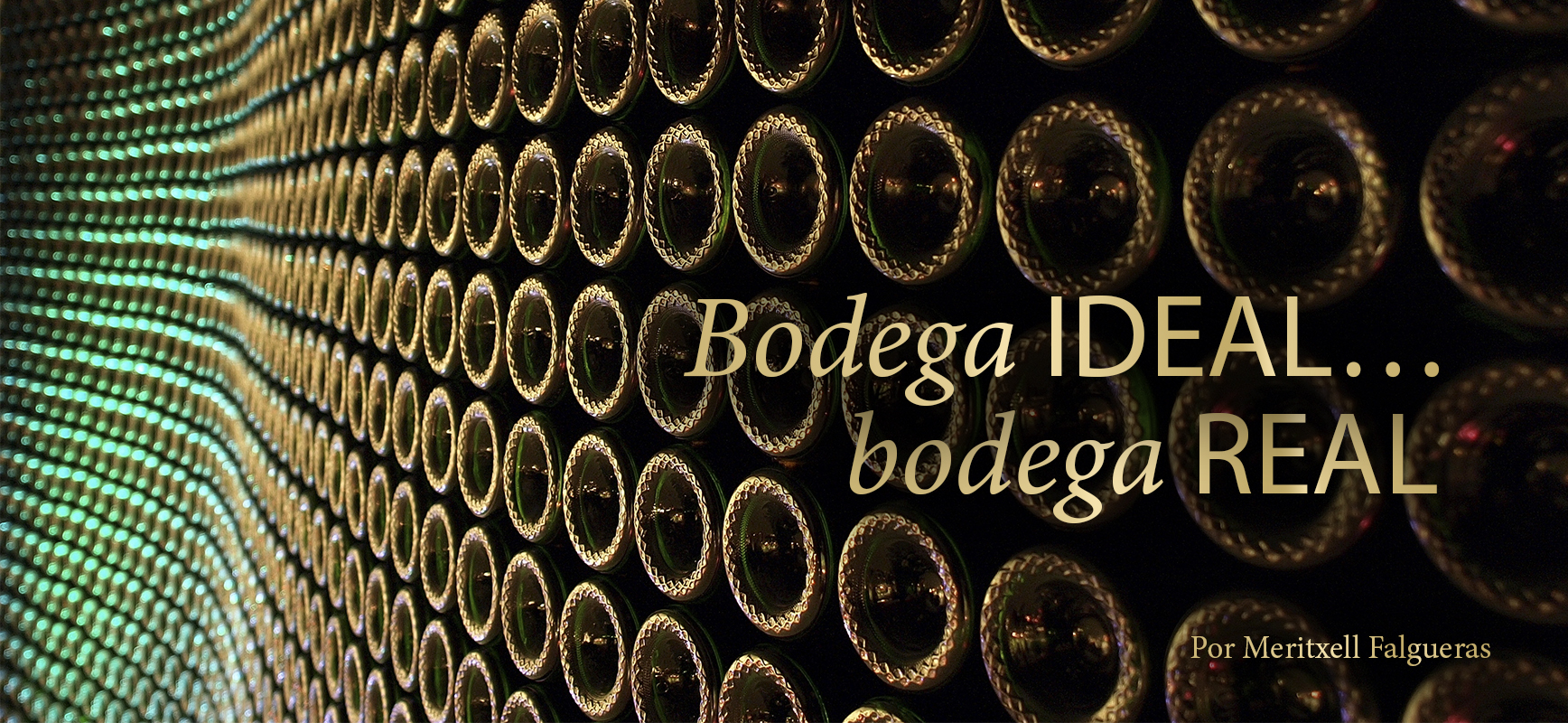The Wine Cellar: Ideal vs.Real

According to what professional coaches teach us, dreaming is a way of visualizing what we want in order to draw it toward us. This is why I will begin by describing my ideal wine cellar.
The perfect wine cellar (besides being paid for by somebody else) would be underground and facing west, not only for feng-shui-related reasons, but also to avoid all those hours of sun exposure.
The truth, however, is that most of us do not have enough space. This is why a wine refrigerator with 80% humidity and a constant temperature of 16 to 18 degrees Celsius might be the solution... Sadly this means we never get to say anything as cool as “let me just pop down to the cellar to see which wine is at its peak!”
Wine fridges come in different sizes. They might not be cheap, but they are incredibly practical. For a more “low-cost” version, we could leave the bottles in the cardboard box they came in, which at least provides some form of insulation, and store them in a cool place.
Two important side notes:
- Don't store your wine in the kitchen. It is a sure-fire way of turning it into soup.
- A regular fridge is not an ideal habitat. The lack of humidity dries out the cork and then it's bye-bye wine!
Let's keep on dreaming... If we had a restaurant and tons of friends with whom to share extraordinary wines, it would be great to buy cases of different vintages of the same wine. Take Mas La Plana, for example. We could do vertical tastings of its legendary vintages: 1981, 1982, 1996, 2007 and 2010. This would allow us to appreciate how the wine evolves over time, as well as the specific characteristics of each harvest.
All right, after so much fantasizing, lets get back to reality: Here is something we can always do. We can go to a good wine shop and pick up the vintage they have in stock, trusting that it has reached its prime drinking time.
In a dream world, we would have the perfect, always up-to-date mobile app to let us know what we drank and how we rated it. For the rest of us mortals, a notebook to jot down our personal tasting notes will do the trick, and an address book is a good way of keeping the wines organized.
Remember, we not only need to note the name of the wine and the winery, but also the vintage. This is crucial, because it is the wine's liquid history. And if you're into collecting romantic souvenirs, save the signed cork in a transparent bell jar: even after it has been drunk, wine makes a fine work of art!
In the movie-version of our wine cellar, we would build a “wine shrine” featuring the best wines, the best years... We would hang a small slate from each bottle with the vintage noted in chalk. We might even leave a cobweb or two (although the rules dictate good ventilation) to add a romantic vintage touch. The best cellars, however, stand out for being spotless.
It is vitally important to store wine in a horizontal position with the label facing up. This causes the sediments to settle against the back label, making them easier to see.
Now, there is one thing I want to make very clear: letting a wine mature doesn't necessarily make it better. A young wine that sees too many springs will only turn into vinegar.
Remember to drink whites and rosés year round. Store the aged ones in the back, opening them when the right food pairing comes along.
One thing is true for any wine cellar, ideal or real: wines are there to be opened and enjoyed, turning every day into something special...if we wait too long, our grandchildren will be drinking them!
Meritxell Falgueras
